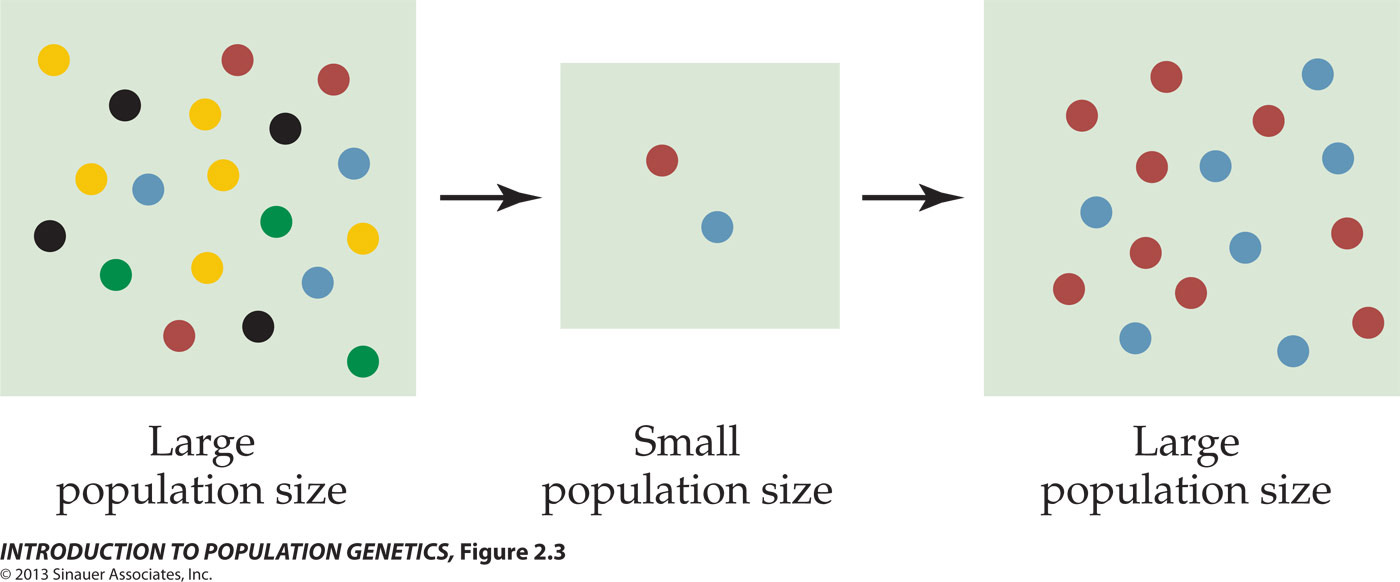
The effect of a Genetic Bottleneck on genetic variability
[Left] The initial population
has a high degree of variability, as illustrated by the
variety of colored balls in the box, each one an allele
from a haploid individual. [Middle] If the population
passes through a strong reduction in population numbers -
a genetic bottleneck - both the variety
of alleles and their relative proportions are
subject to drastic change. (This is also
called "sampling error"). In the example, the
population is reduced to one red and
one blue allele,
the black, yellow,
and green alleles having
been lost by chance. [Right] On recovery of population
numbers, there are nine red and
seven blue alleles, which
shows the effect of genetic
drift (Fig. 2.2).
It is important to recognize the similarities and differences between genetic drift and bottlenecks. Drift occurs in all finite populations, and is most noticeable in the smallest, where chance fluctuations of allele frequencies between generations are most marked. A bottleneck may occur in one generation, by sharp reduction of N in a large population as illustrated above. A similar phenomenon, Founder effect, occurs a new population is started by a small random sample in a new environment. The novel genotypes may be subject to natural selection in favor of the new combinations. Founder events can lead to Peripatric speciation. Bottlenecks and Founder events can both result in continuing loss of allelic variation, especially of rarer alleles, if the small population remains small over several generations.
It is important to recognize the similarities and differences between genetic drift and bottlenecks. Drift occurs in all finite populations, and is most noticeable in the smallest, where chance fluctuations of allele frequencies between generations are most marked. A bottleneck may occur in one generation, by sharp reduction of N in a large population as illustrated above. A similar phenomenon, Founder effect, occurs a new population is started by a small random sample in a new environment. The novel genotypes may be subject to natural selection in favor of the new combinations. Founder events can lead to Peripatric speciation. Bottlenecks and Founder events can both result in continuing loss of allelic variation, especially of rarer alleles, if the small population remains small over several generations.
Figure ©2013 by Sinauer; Text material © 2025 by Steven M. Carr